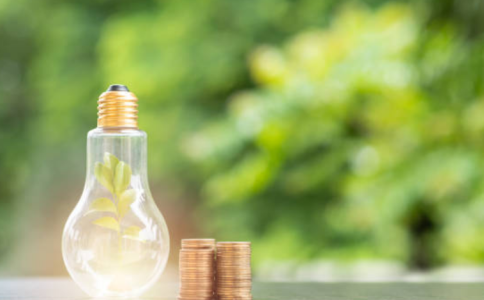Aussies slash power bills by 90 per cent with simple home upgrade
By
Gian T
- Replies 0
If you’ve ever opened your electricity bill and felt your heart skip a beat, you’re not alone.
With energy prices climbing and the cost of living biting harder than a winter southerly, many Australians—especially those of us in the over-60s club—are looking for ways to keep the lights on without breaking the bank.
But what if we told you that you could cut your power bills by up to 90 per cent? No, it’s not a pipe dream or a dodgy sales pitch—it’s the finding of a new report that’s turning heads across the country.
The Real Power Struggle: It’s Not Just Coal vs Renewables
For years, the national conversation about energy has sounded like a superhero showdown: coal versus renewables, gas versus solar, and endless debates about how fast we can build new infrastructure.
But according to Luke Menzel, CEO of the Energy Efficiency Council, we’ve been missing a crucial part of the story: how we actually use energy in our homes.
While politicians argue about where our power comes from, experts say the real savings are hiding in plain sight—right inside our own four walls.
The latest report from the Institute for Energy Economics and Financial Analysis (IEEFA) reveals that by making our homes more energy efficient, we could slash our bills by a whopping 82 per cent to 94 per cent. That’s not just a few dollars off your quarterly bill—that’s a game-changer.
How Do You Get There? The Home Energy Makeover
The IEEFA report highlights key steps to cutting energy costs and boosting efficiency at home.
Installing rooftop solar and a home battery allows you to generate and store your own power.
Switching to reverse-cycle air conditioning and heat pump hot water systems can significantly reduce energy use.
Finally, replacing gas cooktops with electric induction models offers a safer, faster, and more efficient way to cook.
And that’s just the start. The report didn’t even factor in the extra savings you can get by improving your home’s 'thermal efficiency'—in other words, how well your house keeps the heat in during winter and out during summer.
Simple upgrades like better insulation, double-glazed windows, and sealing up draughts can make a huge difference, letting you use more of your solar power during the day to pre-heat or pre-cool your home before the evening chill (or heat) sets in.
Government Support: Help Is on the Way
The good news is, governments are starting to catch on. The Victorian government recently announced a ban on gas heating and hot water in new homes from 2027, and the federal government’s new $2.3 billion home battery program is offering discounts of around 30 per cent on battery installations.
These policies are designed to make it easier—and more affordable—for everyday Aussies to make the switch.
The Case for a ‘Renovation Wave’
If your home was built before 2003, it probably wasn’t designed with energy efficiency in mind.
The independent Climateworks Centre at Monash University has been calling for a 'renovation wave' to bring older homes up to scratch.
Their research shows that adding insulation, upgrading windows, and replacing old appliances could save households up to $2,200 a year.
Dr Gill Armstrong from Climateworks says these upgrades are 'low-hanging fruit'—easy wins that can deliver big savings, fast.
With more and more Aussies waking up to the benefits, it’s a no-brainer for governments to support it.
Why Should Seniors Care?
For those of us in the Seniors Discount Club, energy efficiency isn’t just about saving money (though that’s a big part of it!).
It’s also about comfort, health, and peace of mind. A well-insulated, efficient home is warmer in winter, cooler in summer, and less prone to those nasty bill shocks.
Plus, by cutting down on gas and electricity use, we’re doing our bit for the environment and helping to secure a better future for our grandkids.
Getting Started: What Can You Do Today?
The report also encourages households to explore available rebates and incentives, which can reduce the upfront cost of solar systems, batteries, and energy-efficient appliances.
Booking a home energy assessment can help identify the best upgrades for your space, often at little or no cost.
Starting small with actions like sealing draughts or switching to LED lights can still have an impact.
And if bigger renovations are on the horizon, planning for insulation, double glazing, and efficient systems can lead to long-term savings.

Have you upgraded your home for energy efficiency? Did you notice a difference in your bills or comfort? Or are you considering making some changes but not sure where to start? Share your experiences, tips, and questions in the comments below.
Read more: Homeowners are making this switch and saving big—discover how they're doing it!
With energy prices climbing and the cost of living biting harder than a winter southerly, many Australians—especially those of us in the over-60s club—are looking for ways to keep the lights on without breaking the bank.
But what if we told you that you could cut your power bills by up to 90 per cent? No, it’s not a pipe dream or a dodgy sales pitch—it’s the finding of a new report that’s turning heads across the country.
The Real Power Struggle: It’s Not Just Coal vs Renewables
For years, the national conversation about energy has sounded like a superhero showdown: coal versus renewables, gas versus solar, and endless debates about how fast we can build new infrastructure.
But according to Luke Menzel, CEO of the Energy Efficiency Council, we’ve been missing a crucial part of the story: how we actually use energy in our homes.
While politicians argue about where our power comes from, experts say the real savings are hiding in plain sight—right inside our own four walls.
The latest report from the Institute for Energy Economics and Financial Analysis (IEEFA) reveals that by making our homes more energy efficient, we could slash our bills by a whopping 82 per cent to 94 per cent. That’s not just a few dollars off your quarterly bill—that’s a game-changer.
How Do You Get There? The Home Energy Makeover
The IEEFA report highlights key steps to cutting energy costs and boosting efficiency at home.
Installing rooftop solar and a home battery allows you to generate and store your own power.
Switching to reverse-cycle air conditioning and heat pump hot water systems can significantly reduce energy use.
Finally, replacing gas cooktops with electric induction models offers a safer, faster, and more efficient way to cook.
And that’s just the start. The report didn’t even factor in the extra savings you can get by improving your home’s 'thermal efficiency'—in other words, how well your house keeps the heat in during winter and out during summer.
Simple upgrades like better insulation, double-glazed windows, and sealing up draughts can make a huge difference, letting you use more of your solar power during the day to pre-heat or pre-cool your home before the evening chill (or heat) sets in.
The good news is, governments are starting to catch on. The Victorian government recently announced a ban on gas heating and hot water in new homes from 2027, and the federal government’s new $2.3 billion home battery program is offering discounts of around 30 per cent on battery installations.
These policies are designed to make it easier—and more affordable—for everyday Aussies to make the switch.
The Case for a ‘Renovation Wave’
If your home was built before 2003, it probably wasn’t designed with energy efficiency in mind.
The independent Climateworks Centre at Monash University has been calling for a 'renovation wave' to bring older homes up to scratch.
Their research shows that adding insulation, upgrading windows, and replacing old appliances could save households up to $2,200 a year.
Dr Gill Armstrong from Climateworks says these upgrades are 'low-hanging fruit'—easy wins that can deliver big savings, fast.
With more and more Aussies waking up to the benefits, it’s a no-brainer for governments to support it.
Why Should Seniors Care?
For those of us in the Seniors Discount Club, energy efficiency isn’t just about saving money (though that’s a big part of it!).
It’s also about comfort, health, and peace of mind. A well-insulated, efficient home is warmer in winter, cooler in summer, and less prone to those nasty bill shocks.
Plus, by cutting down on gas and electricity use, we’re doing our bit for the environment and helping to secure a better future for our grandkids.
Getting Started: What Can You Do Today?
The report also encourages households to explore available rebates and incentives, which can reduce the upfront cost of solar systems, batteries, and energy-efficient appliances.
Booking a home energy assessment can help identify the best upgrades for your space, often at little or no cost.
Starting small with actions like sealing draughts or switching to LED lights can still have an impact.
And if bigger renovations are on the horizon, planning for insulation, double glazing, and efficient systems can lead to long-term savings.
Key Takeaways
- A new report has found that Australian households could slash their power bills by more than 90 per cent by making homes more energy efficient, such as installing solar, home batteries, and efficient appliances.
- Government policies like rebates, a push for electrification, and home battery storage incentives are key to helping households halve their energy bills within a decade.
- Upgrading home features—including insulation, efficient windows, and switching from gas to electric heating, hot water, and induction cooktops—can offer quick and significant savings, potentially up to $2,200 a year per household.
- Improving thermal efficiency and electrifying appliances in homes not only reduces costs but also cuts greenhouse gas emissions and helps address energy supply pressures, especially on Australia’s east coast.
Read more: Homeowners are making this switch and saving big—discover how they're doing it!







